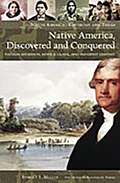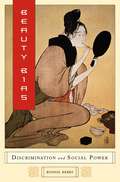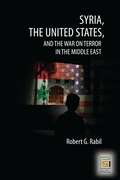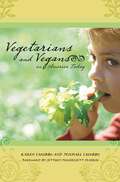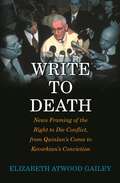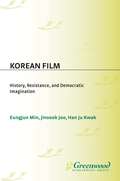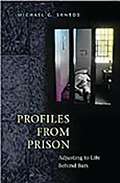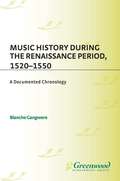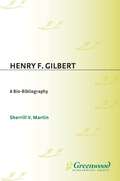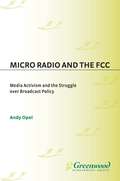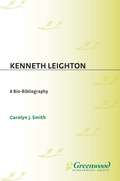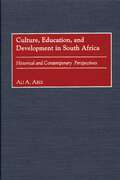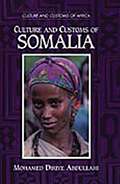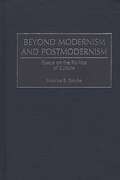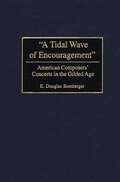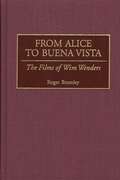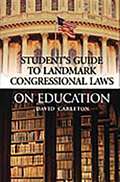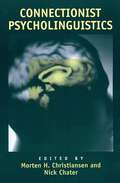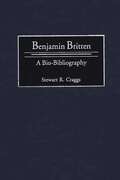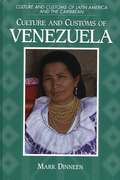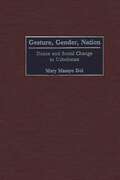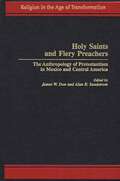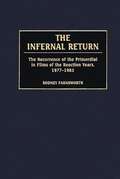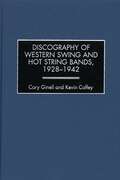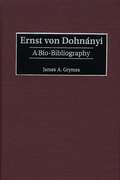- Table View
- List View
Native America, Discovered and Conquered: Thomas Jefferson, Lewis & Clark, and Manifest Destiny (Native America: Yesterday and Today)
by Robert J. MillerManifest Destiny, as a term for westward expansion, was not used until the 1840s. Its predecessor was the Doctrine of Discovery, a legal tradition by which Europeans and Americans laid legal claim to the land of the indigenous people that they discovered. In the United States, the British colonists who had recently become Americans were competing with the English, French, and Spanish for control of lands west of the Mississippi. Who would be the discoverers of the Indians and their lands, the United States or the European countries? We know the answer, of course, but in this book, Miller explains for the first time exactly how the United States achieved victory, not only on the ground, but also in the developing legal thought of the day.The American effort began with Thomas Jefferson's authorization of the Lewis & Clark Expedition, which set out in 1803 to lay claim to the West. Lewis and Clark had several charges, among them the discovery of a Northwest Passage—a land route across the continent—in order to establish an American fur trade with China. In addition, the Corps of Northwestern Discovery, as the expedition was called, cataloged new plant and animal life, and performed detailed ethnographic research on the Indians they encountered. This fascinating book lays out how that ethnographic research became the legal basis for Indian removal practices implemented decades later, explaining how the Doctrine of Discovery became part of American law, as it still is today.
Beauty Bias: Discrimination and Social Power
by Bonnie BerrySociety has always been fixated on looks and celebrities, but how we look has deep ramifications for ordinary people too. In this book, Bonnie Berry explains how social inequality pertains to prejudice and discrimination against people based on their physical appearance. This form of inequality overlaps with other, better-known forms of inequality such as those that result from sexism, racism, ageism, and classism. Social inequality regarding looks is notable in a number of settings: work, medical treatment, romance, and marriage, to mention a few. It is experienced as limitations on access to social power. Berry discusses the pressures to be attractive and the methods by which we strive to alter our appearance through plastic surgery, cosmetics, and the like.Berry also discusses cultural factors, such as the manner in which globalization of media, advertisements, and movies have trended toward homogenization, whereby we are all encouraged to appear tall, thin, white, and with Northern European features even if we are none of those things. She also analyzes the underlying social forces such as economic incentives that, on the one hand, channel us to be as physically acceptable as possible via the sale of diet pills and skin lighteners, and on the other hand, encourage us to accept ourselves as we are by selling us plus-size clothing. The book concludes with suggestions for equal rights extended to all regardless of appearance. Here, Berry describes budding social movements and grassroots endeavors toward an acceptance of looks diversity.
Syria, the United States, and the War on Terror in the Middle East (Praeger Security International)
by Robert G. RabilEver since Syria won its independence from France in 1946, it has been a crucial player in Middle Eastern politics. Over the years, relations between the United States and Syria have fluctuated as Washington has tried to balance its commitment to Israel's security with its support for Arab regimes in order to protect vital and strategic interests in the Arab world. The Arab-Israeli conflict is, however. no longer the only focal point of the relationship. Now, terrorism has entered the fray. On the State Department's terrorism list since 1979, Syria became even more persona non grata as far as Washington was concerned when Damascus vocally opposed the U.S. invasion of Iraq in 2003. The American war in Iraq, occupation, and promotion of democracy throughout the Middle East pose a strong challenge to the Syrian regime. The new Syrian leadership, in power only since 2000, faces immense challenges—protecting Syria's regional status and surviving internal and external threats. Against this background, Syria and the United States have set themselves on a collision course over terrorism, arms proliferation, Lebanon, the Middle East peace process, and Iraq. Syria is, nevertheless, extremely important to the United States, because it can be a force for either stability or instability in an extremely volatile region.Recent events have put the spotlight on Syria's policies and actions. After the assassination of a Lebanese politician, protests in Lebanon led to the withdrawal of Syrian troops. While the withdrawal averted an immediate threat of bloodshed, the Bush administration accused Syria of being a source of instability in the Middle East, with Secretary of State Rice charging that Syria was still active in Lebanon and was supporting foreign terrorists fueling the insurgency in Iraq. The U.S.-Syrian relationship is of critical importance to the United States' efforts to promote democracy throughout the Middle East. At the same time, the United States has been pressuring Syria to clamp down on terrorism within its own borders. Rabil provides a history of the modern U.S.-Syrian relationship, putting the latest events in the context of this contemporary history, and placing the relationship in the context of Middle Eastern politics.
Vegetarians and Vegans in America Today: American Subcultures (American Subcultures)
by Karen Iacobbo Michael IacobboVegetarianism is not a diet trend, or the flavor of the month. Instead, it is a philosophy and practice with roots in antiquity. Vegetarianism has existed for centuries in much of the world as a social movement and subculture. In the United States, this subculture has existed for more than 200 years. In this book, the Iacobbos bring this thriving subculture to life. By examining its businesses, organizations, events, scholarship, and influence on the arts, and by interviewing dozens of vegetarians and vegans, the authors reveal a subculture whose members hold a variety of perspectives on everything from animal rights to advocacy, politics, and religion.Building upon their previous book, a history of vegetarianism, the Iacobbos delve into its current incarnations. They include information on the food industry, health studies on the benefits of vegetarians and vegan ways of eating, the popularity of vegetarianism, and the backlash against it. They highlight the work of vegetarian advocates and provide a glimpse of the stores, magazines, restaurants, and organizations that bring this subculture together. Finally, they include projections for the future from vegetarians, environmentalists, lawyers, nutritionists, economists, and experts in animal rights.
Write to Death: News Framing of the Right to Die Conflict, from Quinlan's Coma to Kevorkian's Conviction
by Elizabeth A. GaileyHas the mainstream media been careless in reporting on the issue of euthanasia? As the Right to Die and Physician Assisted Suicide movements gather steam, the national media have been too quick to perpetuate and focus on the medical and legal overtones of death. The ethical, religious, and philosophical dimensions of our increased acceptance of euthanizing the aged, infirm, and disabled are often neglected. Gailey argues that the press's failure to enrich public discourse may well erode its trustworthiness in the public's eye.Using abundant examples from analysis of elite, mainstream news publications, Gailey details how the national press systematically advanced pro-euthanasia views and interpretations, while marginalizing or omitting pro-life perspectives and frames. The battle over legalizing passive and active euthanasia has enormous social, economic, and ethical implications. An understanding of how the news media frame or package such issues for public consumption is critical. Gailey's integrative approach combines an exploration of the major historical, ideational, and economic factors leading to the rise of the Right to Die movement, and includes in-depth analysis of the media's framing of the controversy in the two decades Karen Ann Quinlan's coma in 1975 to Dr. Jack Kevorkian's 1999 conviction.
Korean Film: History, Resistance, and Democratic Imagination (Non-ser.)
by Eungjun Min Jinsook Joo Han Ju KwakDespite its rise in the global market, recent political progress, and a surging interest worldwide, Korean films are relatively unknown and rarely studied. This new work begins by investigating the history, industry structure, and trends of filmmaking in Korea, going on to examine how Hollywood films have affected both Korean mainstream and nonmainstream film industries in terms of both means of production and narrative. Moreover, the authors analyze the ways in which Korean films of recent years have represented the modernization process in Korea itself, as well as the ideological implications that arise from the cinematic constructions of Korean imagination.More than a mere chronological account of Korean cinematic history, ^IKorean Film^R attempts to consider the films as a popular cultural form that have a life beyond their theatrical runs: stars, genres, and key movies become part of any culture's identity, and in their narratives and meanings can be located evidence of the ways in which a culture makes sense of itself. Korea has never before been given such an extensive treatment of this central idea, and here for the first time, the nation's culture and cinema are merged into one discussion that both reflects and shapes our understanding of it.
Profiles from Prison: Adjusting to Life Behind Bars (Criminal Justice, Delinquency, and Corrections)
by Michael G. SantosWritten by an inmate serving 45 years for a drug conviction when he was 23, this is an in-depth view living behind bars from the perspective of prisoners themselves. Sections of the book are based on length of imprisonment. Prisoners in Fort Dix, N.J., detail their unique experiences, thoughts, and feelings about life on the inside. Some describe the actions that lead to their confinement, or detail the complexities of living in all-male communities. Others reveal the ways they cope with their terms, or the expectations they have for life after prison.Santos offers the gripping stories of men serving a variety of terms, providing commentary and analysis as he guides readers through the prison experience. How men adjust to their confinement, and how they utilize their time while serving their sentences, can be a predictor of future success or failure both in prison and society upon their release. Through these often-difficult accounts, readers gain a greater understanding of what it means to be a prisoner, and how the system itself can contribute to both positive adjustment and negative outcomes alike.
Music History During the Renaissance Period, 1520-1550: A Documented Chronology (Music Reference Collection)
by Blanche M. GangwereThis annotated chronology of western music is the third in a series of outlines on the history of music in western civilization. It contains a 120-page annotated bibliography, followed by a detailed, documented outline that is divided into ten chapters. Each chapter is written in chronological order with every line being documented by means of abbreviations that refer to the annotated bibliography. There are short biographies of the theorists and detailed discussions of their works. The information on music is organized by classes of music rather than by composer. Also included are lists of manuscripts with descriptions of their contents and notations as to where they may be found. The material for the outline has been taken from primary and secondary sources along with articles from periodicals.Like the other two volumes in this series, Music History from the Late Roman through the Gothic Periods, 313-1425 and Music History During the Renaissance Period, 1425-1520, this volume will be an important research tool for anyone interested in music history.
Henry F. Gilbert: A Bio-Bibliography (Bio-Bibliographies in Music)
by Sherrill MartinDuring his lifetime, Henry F. Gilbert was regarded as one of the foremost composers of the day and a trailblazer in America's rich musical heritage. Often called the Mark Twain of American Music, Gilbert was one of American music's nonconformists. He was a maverick who became a true prophet of American music as a composer, writer, editor, and lecturer. This volume contains a short biography of Gilbert, a listing of his compositions, including the different versions of the works and the holding libraries. A discography is included, which puts emphasis on the inclusion of excerpts from contemporary performances. This book captures much of the new material on Gilbert that has surfaced since the Henry F. Gilbert Papers were presented to Yale.The volume is divided into six sections. The first is the biography, which includes a sketch of Gilbert's life, and his importance in establishing an American school of composition. The Works and Performances section provides the name of the work, publisher, and date and revisions of the work. Scoring for the compositions is also given along with cross-references to Gilbert's program notes and reviews. An annotated Bibliography of writings by Gilbert summarizes his philosophy of American music, and illuminates his own compositional style. A discography, general bibliography, and a bibliography of works and performances are also concluded. This bio-bibliography will appeal to musicians and American enthusiasts alike.
Micro Radio and the FCC: Media Activism and the Struggle over Broadcast Policy (Non-ser.)
by Andrew OpelMicro Radio became a lightening rod for the emerging Media Activism and Reform Movement. Like the environmental movement in the 1960s and 70s that focused on specific issues like nuclear power, the Media Activism Movement discovered a significant formative issue in micro radio at the turn of the millennium. This book is a close examination of the struggle over micro radio. Throughout this research micro radio is viewed as a site of social activity, a unique cultural and historical bond where ideas about the relationship between media and democracy are explored. This work is the first to spotlight this emerging social movement and uses critical historical analysis to provide a description of it.The information in this book shows the struggle over micro radio as the most recent manifestation of a growing social movement, a movement of media activism and reform. As local people took to the airwaves, illegally broadcasting the frivolous to the serious, theoretical concepts such as localism and public access suddenly became grounded in a real world radio show. Micro radio broadcasters were able to demonstrate what is left out of most mainstream media. They showed what could happen when a diverse public is allowed to access the most universal telecommunications of the day. This look at micro radio will be valuable to communications students who are interested in the strategies behind media and social movements, alternative media, and news media practices.
Kenneth Leighton: A Bio-Bibliography (Bio-Bibliographies in Music)
by Carolyn J. SmithKenneth Leighton, best known for his organ and sacred choral music, was a composer of great depth and talent who wrote a significant body of works. Many of those works were written for large orchestras and a significant number of pieces of chamber music were composed for a variety of instrument groupings, as well as for instrumental solos. Anyone interested in 20th-century music as well as British and Scottish Cathedral music will find a wealth of works listed with a description of each.Kenneth Leighton, best known for his organ and sacred choral music, was a composer of great depth and talent who wrote a significant body of works. Many of those works were written for large orchestras and a significant number of pieces of chamber music were composed for a variety of instrument groupings, as well as for instrumental solos. Anyone interested in 20th-century music as well as British and Scottish Cathedral music will find a wealth of works listed with a description of each.This volume begins with a brief biography of Leighton and is followed by an alphabetical listing of works and performances. Also included is a discography and a bibliography of articles, reviews, books, and dissertations. The last section is a chronological list of compositions. Smith helps us to realize that Kenneth Leighton was an extraordinary composer of 20th-century music with a varied body of works and also a virtuoso pianist of some note.
Culture, Education, and Development in South Africa: Historical and Contemporary Perspectives (Non-ser.)
by Ali A. AbdiWith the fall of apartheid in South Africa, expectations were high for the enfranchisement of the acutely underdeveloped majority in South Africa. But problems abound, and this educational study looks critically at the educational situation and puts forth a number of proposals that could produce better results in contemporary South Africa.Abdi urges that beyond the celebratory platforms of the political triumph over apartheid, there must be effective and culturally inclusive programs of education for the development of the highly disenfranchsed majority in South Africa.Deliberate programs of colonialism and apartheid in South Africa resulted in inferior education, cultural marginalization, political oppression, economic exploitation and resulting underdevelopment in the lives of the disenfranchised majority. In addition to historical and contemporary analysis, this study looks at the possibilities of formulating and implementing new programs of education and development that could effectively deal with such current problems as chronic unemployment, skyrocketing crime rates, stagnating learning systems, and the continuing formations of a huge underclass that may be losing its stake in the promised post-apartheid project.
Culture and Customs of Somalia (Culture and Customs of Africa)
by Mohamed Diriye AbdullahiSomalia, the Horn of Africa nation, is finally recovering from recent wars and famine. Written by a native Somali, Culture and Customs of Somalia gives students and interested readers an in-depth look at the land and people, past and present. It is the only accessible, comprehensive, and up-to-date general reference on this country. Somalia was once colonized by Europeans, but Abdullahi's superb survey, with its historical context, evokes a Somaliland from a Somali viewpoint.This Muslim country has strong pastoral roots and is known as a land of poets with a long oral cultural tradition. Some highlights found herein include discussion of handcrafts and artisanry, distinctive architecture and nomad housing, camel culture, intriguing food and eating customs, rites of passage, leisure and economic pursuits, education, and the Somali musical genres. A chronology, glossary, and numerous photos enhance the text.
Beyond Modernism and Postmodernism: Essays on the Politics of Culture
by Maurice R. BerubeBerube examines the political matrix of intellectual and cultural America. In a wide-ranging series of essays from the rise of the postmodern intellectual to a modernist appreciation of the spiritual quality of the paintings of Jackson Pollock, Berube stakes out his claim that all areas of human endeavor are rooted in a politics of culture.The essay collection is divided into three sections: The first two essays deal with the postmodern intellectual and the corporate university; the second section plumbs the depth of a conservative school reform movement and asks whether we have not reached an end to education reform. The last section contains essays pertaining to precarious state of arts education in the schools, reflections on a modernist literary canon, the contribution of Pollock and plumbing alternative views of Jesus as the penultimate revolutionary. Of particular interest to scholars, students, and other researchers involved with cultural studies and education.
A Tidal Wave of Encouragement: American Composers' Concerts in the Gilded Age (Non-ser.)
by E. Douglas BombergerIn July of 1884, pianist Calixa Lavallée performed a recital of works by American composers that began a highly influential series of such concerts. Over the course of the next decade, hundreds of all-American concerts were performed in the United States and Europe, a movement that fostered both the development and the perception of American music as a unique art form. A Tidal Wave of Encouragement-the title of which is derived from one observer's description of the movement-is the first in-depth study of this significant period in American music. Providing a comprehensive history of the Concerts as well as detailed accounts of the intense critical debate surrounding them, author E. Douglas Bomberger reveals how one decade shaped the future of American classical music and very much impacted the way we hear it today.The movement, crucial in focusing discussion on American music and providing performance opportunities for composers and musicians for whom no such opportunities had before existed, was far more extensive and widespread than most scholarship had credited it. This oversight is due in large part to the dearth of objective studies of the Concerts; previous considerations have tended either toward the merely nostalgic or toward the unnecessarily disparaging. Bomberger's work is a corrective to this, as well as much-needed historical and critical account of a project whose influence had yet to be fully acknowledged.
From Alice to Buena Vista: The Films of Wim Wenders (Non-ser.)
by Roger BromleyThis analysis of the films of Wim Wenders from the early 1970's through the 1990's attempts to place his work in the cultural and political context of the time. Feminist analysis, cultural theory, and psychoanalysis combine to explore the major themes in the films with an emphasis on gender and narrative and on Wenders' concern with the representation of otherness. Wenders' earlier films reflect concerns with identity and with issues of masculinity and detachment. His later films reveal a preoccupation with seeing, images, and love, which culminated in the international success of The Buena Vista Social Club. As this study suggests, Wenders' later works manifest a shift in direction away from indifference and toward reconciliation, ethical practice, and relationships.This study will appeal to film scholars, to those with a special interest in German cinema and culture and to admirers of Wenders' films. Thematically arranged, chapters begin with the early films and trace the masculinity, identity, and lost narrative motifs throughout Wenders' oeuvre.
Landmark Congressional Laws on Education (Student's Guide to Landmark Congressional Laws)
by David CarletonWhy has the federal government played an ever-expanding role in our educational system? What controversial political and social issues led to the enactment of landmark education laws by the U.S. Congress? Have you considered the impact of some of the most important federal education laws--the G.I. Bill of Rights, college loan programs, funding of black colleges, school lunch programs, creation of Head Start, special education programs, bilingual education, and equal funding for girls' athletics? This unique reference work provides an explanation and discussion of each landmark law followed by the actual text of key passages of the law, which have been carefully edited for students. Nineteen landmark laws are covered, from the Land Ordinance of 1785, which set aside land in the western territories for the creation of schools, to Goals 2000: Educate America Act, Bill Clinton's ambitious agenda for student education by the year 2000.The entry on each landmark law consists of the following sections: a discussion of the intent and purpose of the legislation; a summary of the substance of the law, including an explanation of difficult-to-understand terms and concepts; an examination of the politics and legislative history of the act; a summary of the impact of the law; the actual text of key passages of the law. The laws are organized chronologically. An introductory overview of the federal government's role in education, followed by a detailed timeline of milestones in the history of U.S. education, places the topic in historical context.
Connectionist Psycholinguistics (Non-ser.)
by Morten H. Christiansen Nick ChaterSetting forth the state of the art, leading researchers present a survey on the fast-developing field of Connectionist Psycholinguistics: using connectionist or neural networks, which are inspired by brain architecture, to model empirical data on human language processing. Connectionist psycholinguistics has already had a substantial impact on the study of a wide range of aspects of language processing, ranging from inflectional morphology, to word recognition, to parsing and language production.Christiansen and Chater begin with an extended tutorial overview of Connectionist Psycholinguistics which is followed by the latest research by leading figures in each area of research. The book also focuses on the implications and prospects for connectionist models of language, not just for psycholinguistics, but also for computational and linguistic perspectives on natural language. The interdisciplinary approach will be relevant for, and accessible to psychologists, cognitive scientists, linguists, philosophers, and researchers in artificial intelligence.
Benjamin Britten: A Bio-Bibliography (Bio-Bibliographies in Music)
by Stewart R. CraggsBenjamin Britten was arguably the greatest English composer of his time. His music crossed boundaries of genre and form to include opera, ballet, orchestral and chamber music, and film and incidental music. The result of twenty years of research, ^IBenjamin Britten^R provides up-to-date and comprehensive details about Britten's life and music, including works, performances, and recordings--an effort never before undertaken. Certain to be of use to any scholar of British music or 20th century composition, this reference work is an invaluable addition to the literature on this important artist.Following a brief biography of the subject, author Stewart Craggs provides a complete list of works and performances, arranged by genre; a discography, and an annotated bibliography. Rounding out the volume are two lists of compositions, one arranged alphabetically and the other chronologically, and a general index.
Culture and Customs of Venezuela (Culture and Customs of Latin America and the Caribbean)
by Mark DinneenVenezuela, one of the least-known countries in Latin America, is brilliantly spotlighted in Culture and Customs of Venezuela. This oil-rich nation sustained a stable democracy until the economic downturn in the 1980s, and changes in the social and political spheres will bring the country under increasing scrutiny from the outside world. Dinneen captures the sharp contrasts and immense variety of modern Venezuela. Students and interested readers will find engaging and authoritative overviews of the land, people, and history; religions; social customs; media; cinema; literature; performing arts; and art and architecture.This work successfully portrays the country's cultural richness and diversity. Influences from the United States are inescapable, especially in Caracas, but many distinctive traditions are continued throughout the country, varying from region to region. Religious rituals and numerous festivals that take place in towns and villages and the vibrant music scene, all major expressions of the nation's social and cultural life, are just some of the highlights found herein. Numerous photos give witness to Venezuela's diverse culture and a chronology, and glossary supplement the text.
Gesture, Gender, Nation: Dance and Social Change in Uzbekistan
by Mary M. DoiThe national dancers of Uzbekistan are almost always female. In a society that has been Muslim for nearly seven hundred years, why and how did unveiled female dancers become a beloved national icon during the Soviet period? Also, why has their popularity continued after the Uzbek republic became independent? The author argues that dancers, as symbolic girls or unmarried females in the Uzbek kinship system, are effective mediators between extended kin groups, and the Uzbek nation-state. The female dancing body became a tabula rasa upon which the state inscribed, and reinscribed, constructions of Uzbek nationalism.Doi describes the politics of gender in households as well as the dominant kinship idioms in Uzbek society. She traces the rise of national dance as a profession for women during the Soviet period, prior to which women wore veils and kept purdah. The final chapter examines emerging notions of Uzbek, as regional and national groups contest the notion through debates about what constitutes authentic Uzbek dance. Doi concludes with a comparative discussion of the power of marginality, which enabled Uzbeks to maintain a domain where Uzbek culture and history could be honored, within the Russocentric hegemony of the Soviet state.
Holy Saints and Fiery Preachers: The Anthropology of Protestantism in Mexico and Central America (Religion in the Age of Transformation)
by Alan R. Sandstrom James W DowBased on empirical analysis, this ethnographic fieldwork and collection of original articles on contemporary Protestant religions in Mexico and Central America examines regions ranging from the Pacific coast in the north to Guatemala in the south. These new studies reveal that Protestantism was in the rise in the last decades of the twentieth century because it was opposing political structures that were largely unworkable in a new age of economic expansion and population growth. The studies cover regional and local variations in the growth of Protestantism, examine numerous reasons for the variations, and compare rural villages with modern communities. While the Catholic Church remains only a marginal player in the conflicts taking place in local communities, the book concludes that the modern religious conflicts bear only a general resemblance to the anti-Catholic issues that impelled the original Protestant Reformation in Europe.Relying on traditional scientific principles of data recording and theory development, the contributors look into the lives of contemporary rural people, Indian and mestizo, and provide data that enhance the general study of modern religious movements. The chapters examine, among other topics, the relationship between religion and demography, the role of leadership in church growth, the theories of Max Weber relating capitalism and Protestantism, religious conversion, and the modernization of Indian communities. Scholars and students who are interested in cultural anthropology, religious change, and religion in Latin America will find in these pages a unique and enlightening examination of Protestantism's rise and spread in Latin America.
The Infernal Return: The Recurrence of the Primordial in Films of the Reaction Years, 1977-1983
by Rodney FarnsworthGeorge Lukas and other leading filmmakers acknowledge their indebtedness to mythographic scholarship on archetypes. In his new study, author Rodney Farnsworth identifies a pattern of filmmakers' obsessions with archetypical rituals centered on sacrifice and the family in films made between 1977 and 1983, a period of political upheaval on both sides of the Atlantic. Combining a strong historical reading of the films in a sociopolitical context and utilizing Queer Theory as a framework for his arguments, Farnsworth offers a close examination of key films of the period, including works by Stanley Kubrick, Robert Altman, and Francis Ford Coppola, and provides a fascinating and timely glimpse of an important political and cinematic time.Marking the end of a more liberal era, the late seventies and early eighties witnessed the growth of reactionary conservative movements such as the New Religious Political Right. These were the years that gave birth to movies--from esoteric art-house pictures to blockbusters such as Star Wars--that seemed in many cases to be adaptations of primordial mythology, subverting liberal-to-moderate views into reactionary depictions of family life. Although filmmakers had turned to these myths to shape their works, Farnsworth observes, the unstable, volatile nature of the archetypes deconstructed their best social intentions into something rich, strange, and deadly. This thought-provoking work will be of interest to students of social history as well as film studies.
Discography of Western Swing and Hot String Bands, 1928-1942 (Discographies: Association for Recorded Sound Collections Discographic Reference)
by Cary Ginell Kevin CoffeyThe result of years of research by its authors, this discography strives to identify and trace the recorded development of the musical style now known as western swing from its early years through World War II. The style developed from the Texas string band tradition, growing from a fiddle and guitar duo into full swing band groups, and along the way, it drew from and absorbed a variety of other musical styles, thus making it one of the most diverse genres in American music. Until now, studies have been limited to a few book-length biographies, but through exhaustive research and interviews, Ginell and Coffey have provided the most complete and comprehensive listing of pre-War western swing and hot string band recordings to date.Accessible through a variety of indexes, the information included here comprises four sections. The reader can easily find cross-referenced information on which musicians played with which bands on which songs. Easy-to-follow linear and chronological development of the music is provided as well.
Ernst von Dohnányi: A Bio-Bibliography (Bio-Bibliographies in Music)
by James A. GrymesAs a result of both his political reputation--destroyed by false charges of Nazism after World War II--and his rejection of avant-garde techniques, the recordings and compositions of Ernst von Dohnányi went largely ignored for most of the 20th century. In recent years, however, musicians have begun to revise their interpretations of 20th century music to include compositional and performance styles that, like Dohnányi's, adhered more closely to 19th century aesthetics. Although performers and audiences worldwide have started to rediscover his musical legacy, scholarship has not kept pace with their growing interest. This bio-bibliography corrects that. As the first scholarly examination in English of Dohnányi's life and work, it serves as the perfect introduction to an unfairly neglected 20th century artist.A brief but insightful biography is followed by a list of works that reflects the most current research of Dohnányi's creative output. It includes nearly 200 entries, each of which collects such information as the date of composition, the instrumentation of the work, the publisher of its first edition, the location of the manuscript, and the date and location of its premiere. The discography lists 400 sound recordings of the composer's work, and the annotated bibliography includes 500 entries, emphasizing performance reviews that offer substantial information about Dohnányi's works and style.
